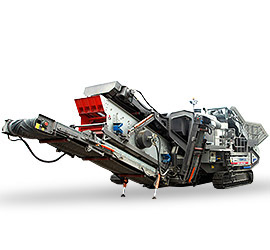Manganese ore processing involves several stages to extract and refine manganese for industrial use. A manganese ore milling machine processing line typically includes crushing, grinding, beneficiation, and sometimes smelting. Below is a detailed breakdown of the process:
—
.jpg) 1. Crushing Stage
1. Crushing Stage
– Primary Crushing: Large manganese ore lumps (up to 1m) are reduced to smaller pieces (about 100-200mm) using a jaw crusher or gyratory crusher.
– Secondary Crushing: Further reduction to 10-50mm using a cone crusher or impact crusher.
2. Grinding (Milling) Stage
– The crushed ore is fed into a ball mill, rod mill, or vertical roller mill for fine grinding.
– Output size: Typically 75-200 microns (for liberation of manganese minerals from gangue).
– Wet grinding may be used with water to form a slurry.
3. Beneficiation (Separation) Stage
Manganese ore often requires beneficiation to increase Mn content and remove impurities like silica, iron, and phosphorus.
# Common Methods:
– Magnetic Separation: For separating magnetic minerals (e.g., iron oxides) from manganese.
– Gravity Separation: Using jiggers or shaking tables for density-based separation.
– Flotation: For fine-grained ores; chemicals help separate manganese minerals from waste.
– Washing & Screening: Removes clay and loose impurities.
4. Dewatering & Drying
– A thickener or filter press removes water from the slurry.
– A rotary dryer may be used to reduce moisture before smelting.
5. Smelting (Optional for High-Grade Processing)
– Some plants use electric arc furnaces or blast furnaces to produce ferromanganese or silicomanganese alloys.
—
Key Equipment in Manganese Ore Milling Line
| Stage | Equipment |
|——–|————|
| Crushing | Jaw Crusher, Cone Crusher |
| Grinding | Ball Mill, Rod Mill, Vertical Roller Mill |
| Beneficiation | Magnetic Separator, Jigger, Shaking Table, Flotation Machine |
| Dewatering | Thickener, Filter Press |
| Drying | Rotary Dryer |
| Smelting | Electric Arc Furnace |
—
 Flowchart of Manganese Ore Processing
Flowchart of Manganese Ore Processing
1. Raw Ore →




